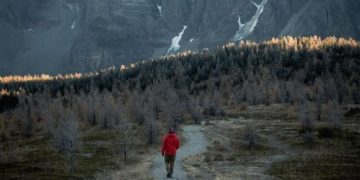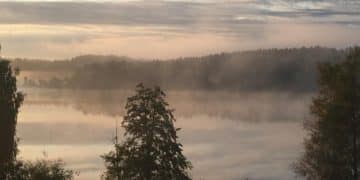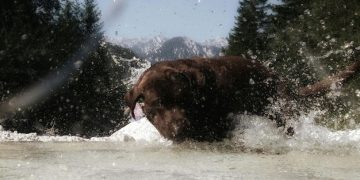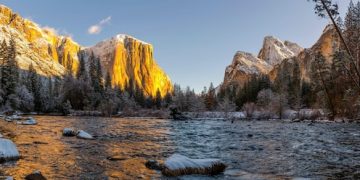Unlocking Hidden Gems: A 2025 Guide to Undiscovered US National Parks
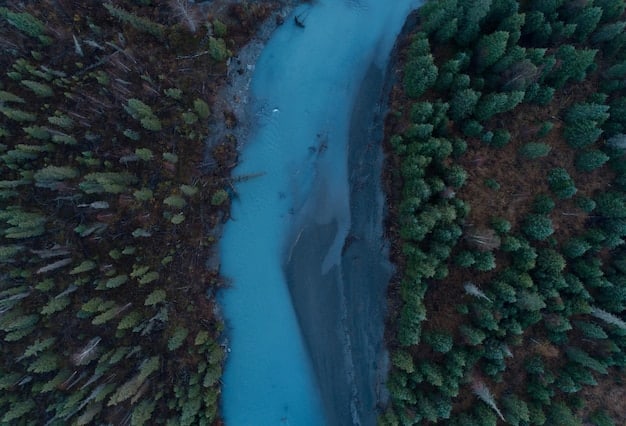
This guide explores lesser-known national parks across the United States, offering insights into unique natural landscapes and recreational opportunities for travelers seeking to escape the crowds in 2025, providing valuable information on how to discover and enjoy these hidden natural treasures responsibly.
Embarking on a journey through the United States often brings to mind iconic national parks like Yellowstone, Zion, or Yosemite. While these natural wonders are undeniably breathtaking, their popularity can sometimes lead to overcrowded trails and limited serenity. For the discerning traveler in 2025, the true adventure lies in discovering the less-trodden paths, the quiet corners, and the vast, untouched beauty of America’s hidden national parks. This guide, “Unlocking Hidden Gems: A 2025 Guide to Undiscovered National Parks in the US,” is your compass to these remarkable, often overlooked, natural sanctuaries.
Beyond the Crowds: Why Explore Undiscovered Parks?
The allure of national parks has grown exponentially, leading to record visitation numbers at the most famous locations. While this enthusiasm for nature is commendable, it often translates into bustling trails, competitive lodging, and a diminished sense of wilderness. Exploring lesser-known parks offers a distinct advantage: the opportunity to truly connect with nature without the constant hum of human activity.
These parks, though perhaps not as widely publicized, are no less spectacular. Many harbor unique ecosystems, significant historical sites, or geological formations that rival their more famous counterparts. For instance, imagine a park where ancient rock art whispers tales of indigenous cultures, or where volcanic landscapes present a stark, beautiful contrast to lush forests. Such experiences foster a deeper appreciation for the diversity of America’s natural heritage and provide ample space for introspection and genuine adventure.
The Benefits of Seclusion
- Enhanced Serenity: Enjoy peace and quiet, allowing for a more immersive natural experience.
- Unique Wildlife Encounters: Less human disturbance often means more frequent and intimate wildlife sightings.
- Authentic Connection: Feel a stronger bond with the natural environment, free from overwhelming crowds.
- Photography Opportunities: Capture stunning landscapes without throngs of tourists in the frame.
Furthermore, visiting these less-trafficked parks often contributes to their sustainable management, distributing tourism’s economic benefits more broadly and reducing pressure on overvisited areas. It’s a conscious choice that benefits both the traveler and the environment, promoting a more balanced approach to national park exploration. This allows for a deeper appreciation of the natural setting, moving beyond just sightseeing to truly experiencing the wild beauty on offer.
The journey to these hidden gems may require a bit more planning and a willingness to step outside the conventional travel itinerary, but the rewards—unforgettable memories, unparalleled tranquility, and a sense of discovery—are well worth the effort. These parks are not merely places to visit; they are experiences to be savored, offering a unique perspective on the American landscape.
Navigating the New Frontier: Planning Your 2025 Trip
Venturing into lesser-known national parks requires a different approach to planning. Unlike the well-trodden paths of Yellowstone or Zion, information on these hidden gems might be scarcer, requiring more proactive research. The year 2025 presents an ideal opportunity to map out these less-discovered destinations, leveraging enhanced digital resources and a growing community of off-the-beaten-path adventurers.
Beginning your planning involves identifying parks that align with your interests, whether it’s geology, wildlife viewing, hiking, or simply solitude. National Park Service (NPS) websites are always the primary and most reliable source of information, offering details on park facilities, current conditions, and specific regulations. Beyond the official sites, look for independent travel blogs, forums, and local tourism boards, which often provide invaluable insights into less-publicized trails, best times to visit, and local amenities.
Essential Planning Considerations for Undiscovered Parks
- Accessibility: Research road conditions and seasonal closures, as some parks may have unpaved roads or limited access during certain times of the year.
- Lodging & Camping: Options can be limited or require advanced booking. Consider alternative accommodations like dispersed camping or nearby small towns.
- Supplies: Services within or near these parks might be minimal. Plan to carry enough food, water, and fuel for your entire visit.
- Safety: Familiarize yourself with potential hazards specific to the park, such as wildlife, extreme weather, or challenging terrain. Always inform someone of your itinerary.
Embracing flexibility is key when planning for these destinations. Unpredictable weather, unexpected road closures, or full campsites can quickly alter plans. Having a backup plan or being open to spontaneous changes can turn a potential challenge into a memorable part of the adventure. Additionally, consider visiting during the shoulder seasons (spring or fall) when the weather is often pleasant and crowds are even lighter, further enhancing the sense of discovery.
Engaging with online communities dedicated to national park exploration can also provide a wealth of real-time information and personal recommendations from fellow travelers. These platforms often share tips on avoiding common pitfalls and discovering truly unique experiences that might not be found in official guides. Planning for these trips isn’t just about logistics; it’s about preparing yourself for an experience where the unexpected adds to the thrill, making your journey into America’s hidden national parks genuinely unforgettable.
Beyond the Postcard: Embracing Solitude in Remote Landscapes
The true magic of undiscovered national parks lies in their ability to offer profound solitude, a commodity increasingly rare in our overconnected world. These aren’t just places to see; they are places to feel, to breathe, and to immerse oneself in the grandeur of nature without distraction. Embracing this solitude means more than just avoiding crowds; it involves a conscious decision to disconnect from daily routines and fully engage with the present moment.
In these remote landscapes, the sounds of nature—the whisper of the wind, the rustle of leaves, the distant call of a bird—become primary. Stargazing beneath pristine dark skies, far from urban light pollution, becomes an awe-inspiring experience. Hiking trails might not be paved, requiring a more intuitive connection with the terrain, leading you through ancient forests, across vast deserts, or along rugged coastlines where only the elements guide your way.
Tips for Maximizing Solitude and Immersion
- Digital Detox: Limit screen time and put away your phone to fully absorb your surroundings.
- Mindful Walking: Pay attention to your steps, the feel of the earth, and the sights and sounds around you.
- Journaling: Document your thoughts and observations to deepen your connection with the experience.
- Photography with Purpose: Take photos to capture memories, but don’t let it distract from experiencing the moment.
This engagement with solitude isn’t about isolation but rather a deep, personal interaction with the environment. It allows for a unique kind of introspection, where the vastness of nature helps put life into perspective. Whether it’s sitting by a pristine lake, listening to the quiet murmur of a stream, or simply gazing at an expansive horizon, these moments of profound peace are what truly define the experience of exploring America’s hidden national parks.
The simplicity of these moments, often devoid of complex itineraries or packed schedules, allows for a richness of experience that mass tourism rarely offers. It’s a reminder that sometimes, the most profound adventures are found not in what we conquer, but in what we simply allow ourselves to be a part of. The remote landscapes become a canvas for personal discovery, inviting you to paint your own unique memories.
Conservation and Responsibility: Protecting Our Natural Treasures
As we delve into the beauty of undiscovered national parks, it’s crucial to acknowledge the immense responsibility that comes with visiting these pristine environments. The very reasons these parks remain “hidden gems”—their remoteness, their ecological sensitivity, and their often fragile ecosystems—demand a heightened level of awareness and adherence to conservation principles. Our actions as visitors directly impact the preservation of these natural treasures for future generations.
The core philosophy for responsible visitation in any natural area, and particularly in less-visited ones, is “Leave No Trace.” This means minimizing our impact by planning and preparing, traveling on durable surfaces, disposing of waste properly, leaving what you find, minimizing campfire impacts, respecting wildlife, and being considerate of other visitors. For undiscovered parks, where infrastructure is often minimal and natural processes are dominant, these principles are even more critical.
Key Principles for Responsible Exploration
- Stay on Designated Trails: Protect sensitive vegetation and reduce erosion by sticking to marked paths.
- Pack It In, Pack It Out: Carry out everything you bring in, including all trash and food scraps.
- Respect Wildlife: Observe animals from a distance, never feed them, and avoid disturbing their natural behaviors.
- Minimize Noise: Preserve the tranquility of the park for both wildlife and other visitors.
Supporting park initiatives, whether through volunteer work, donations, or simply adhering to all regulations, also plays a vital role. Many of these parks operate with limited resources compared to their more popular counterparts, making every conscientious visitor a silent contributor to their longevity. Educating ourselves on the specific regulations and ecological sensitivities of each park before visiting can prevent unintentional harm. This proactive approach ensures that our presence enhances, rather than detracts from, the park’s natural integrity.
By embracing these principles, we become stewards of these invaluable landscapes, ensuring that the allure of “undiscovered” parks remains a testament to nature’s enduring power and our collective commitment to its protection. It’s about recognizing that our privilege to experience such untouched grandeur comes with the duty to maintain it. Ultimately, responsible exploration ensures that those who follow us can also unlock the serene beauty inherent in America’s hidden national parks.
Spotlight on Future Favorites: Promising Undiscovered Parks for 2025
While discretion is often key to maintaining the “undiscovered” status of these national parks, a glimpse into some promising candidates for your 2025 travel plans can inspire your journey. These parks often offer unique geological features, rich biodiversity, or cultural significance that sets them apart from the more celebrated destinations, providing a wealth of opportunities for the adventurous traveler.
Consider, for instance, a park characterized by ancient badlands formations, sculpted by wind and water over millennia, offering an otherworldly landscape for exploration and solitude. Another might feature vast wilderness areas with soaring peaks and pristine alpine lakes, accessible only through challenging but rewarding backcountry trails. Yet another could preserve significant historical narratives, blending natural beauty with America’s rich past, inviting visitors to ponder the stories etched into the very landscape.
Potential Gems for Your 2025 Itinerary
While specific park names are carefully withheld to preserve their ‘undiscovered’ status, consider looking for parks that fit these descriptions:
- The Ancient Sculpted Lands: Explore a park known for its bizarre and beautiful erosion patterns, creating a stark, alien landscape perfect for quiet contemplation and unique photography. Imagine labyrinthine canyons and towering spires bathed in the light of dawn.
- High Country Wilderness: Seek out a park in a mountainous region offering extensive backcountry trails, glacier-fed lakes, and opportunities for solitude amidst rugged peaks. Access here often requires self-sufficiency and preparation.
- Coastal Wilderness Sanctuaries: Discover a park on a remote coastline, where the land meets the ocean in dramatic fashion, offering opportunities for sea kayaking, bird watching, and exploring tide pools far from crowded beaches.
- Volcanic Legacies: Look for parks preserving the geological aftermath of ancient volcanic activity, featuring lava flows, cinder cones, and geothermal features that tell a story of earth’s powerful forces.
- Desert Oases and Dark Skies: Find a park in an arid region that surprisingly harbors vital water sources, creating unique ecosystems and offering some of the best stargazing opportunities in the country due to minimal light pollution.
These examples illustrate the diverse natural beauty that awaits beyond the popular circuits. Each of these types of parks offers a distinct experience, promising a genuine connection with nature that is increasingly hard to find. They are not merely destinations; they are invitations to a deeper, more personal form of travel, where discovery is a continuous process.
Researching parks based on these characteristics will guide you toward locales that are less frequented but equally awe-inspiring. Remember, the true joy lies not just in finding these places, but in the journey of discovery itself, culminating in experiences that are truly yours alone. These promising landscapes represent the very essence of exploration in 2025, offering a refreshing alternative to the well-trodden tourist paths.
Future Trends in Park Discoverability and Access for 2025
As we look to 2025, the landscape of national park visitation is continuously evolving, even for those considered “undiscovered.” Advancements in technology and a growing desire for unique travel experiences mean that the concept of an “undiscovered park” is dynamic, shifting with increased accessibility and public awareness. Understanding these trends can help travelers plan more effectively and responsibly for the future.
One significant trend is the rise of more sophisticated digital mapping and information platforms. While helpful for planning, they also mean that previously remote areas are becoming easier to locate and navigate. This increased discoverability, however, places a greater emphasis on visitor education regarding Leave No Trace principles and the importance of responsible recreation. Park services are likely to adapt by enhancing online resources and implementing reservation systems for even lesser-used areas to manage potential increases in visitation.
Evolving Access and Visitor Management
- Digital Tools for Navigation: GPS and offline map applications make remote areas more accessible, demanding more self-reliance from visitors.
- Increased Wilderness Permits: More parks may introduce or expand permit systems for backcountry areas to control visitor numbers and protect sensitive habitats.
- Citizen Science Engagement: Opportunities for visitors to contribute to park research and conservation efforts may expand, fostering a deeper connection and understanding.
- Focus on Sustainable Tourism: Greater emphasis on public transportation to park entrances and eco-friendly practices within parks will likely grow.
Furthermore, there’s a noticeable shift in traveler psychology towards experiences that offer authenticity and escape from the mainstream. This means that parks once only known to dedicated adventurers are gaining traction among a broader audience. As a result, parks might invest in minimal but essential infrastructure improvements, such as improved signage or basic facilities, while striving to maintain their wild character.
The notion of “undiscovered” in 2025 might not mean entirely isolated, but rather places that offer a genuine wilderness experience while still being managed for sustainable enjoyment. This balance is delicate and relies on both the National Park Service and the visitors themselves. By staying informed about these trends and committing to responsible travel, we can ensure that these hidden gems continue to offer their unique brand of solitude and beauty for many years to come.
Ultimately, the future of accessing and exploring these less-visited parks hinges on a collective commitment to preservation and thoughtful engagement. It’s about making informed choices that protect the very allure that draws us to these remote and remarkable places, ensuring that the concept of “undiscovered” remains a possibility, not just a nostalgic memory.
| Key Aspect | Brief Description |
|---|---|
| 🏞️ Seclusion Benefits | Offers peace, unique wildlife, and genuine nature connection. |
| 🗺️ Planning Essentials | Requires detailed research on accessibility, lodging, and supplies. |
| 🌿 Conservation Duty | Emphasizes Leave No Trace principles to protect fragile ecosystems. |
| 💡 Future Trends | Increased digital discoverability means evolving visitor management. |
Frequently Asked Questions About Undiscovered National Parks
▼
An “undiscovered” national park typically refers to one that receives significantly fewer visitors compared to popular parks. This can be due to its remote location, challenging accessibility, less aggressive marketing, or simply being overshadowed by more iconic destinations. These parks often offer a more authentic and solitary wilderness experience.
▼
Absolutely not. Many lesser-known national parks boast equally, if not more, stunning landscapes, unique geological features, and diverse wildlife. Their lower visitation numbers are not indicative of their natural beauty or ecological significance. They simply haven’t garnered the same level of mainstream attention or accessibility as the well-known parks.
▼
Preparation is crucial for undiscovered parks, often more so than for popular ones. This includes thorough research on accessibility, weather conditions, available services, and potential hazards. Visitors should also plan to be self-sufficient, carrying adequate supplies of food, water, and emergency gear, as amenities can be scarce or non-existent.
▼
To find these parks, start by exploring the National Park Service website beyond the most famous names. Look into national preserves, monuments, and historical parks that also offer natural beauty. Consulting specialized outdoor recreation forums, local tourism boards, and independent travel blogs can also provide leads to less-trafficked but equally rewarding destinations.
▼
Responsible tourism in undiscovered parks means adhering strictly to Leave No Trace principles. This includes staying on marked trails, packing out all waste, respecting wildlife, and minimizing noise. Prioritize learning about specific park regulations and environmental sensitivities. Your mindful actions preserve these fragile ecosystems for future visitors and wildlife.
Conclusion
As 2025 beckons, the opportunity to explore America’s national parks expands beyond the predictable, inviting a deeper, more personal connection with nature. “Unlocking Hidden Gems” is not just about finding new places; it’s about embracing a new mindset of travel—one that prioritizes solitude, responsibility, and genuine discovery. These lesser-known parks offer a profound escape, a chance to reconnect with the wild, and an extraordinary adventure for those willing to venture off the beaten path. By choosing these unique destinations, travelers contribute to a more sustainable tourism model, ensuring these natural sanctuaries remain pristine for generations to come. The experience of discovering such places, where the silence is as vast as the landscape, truly changes one’s perspective on the immense beauty and fragility of our planet.
